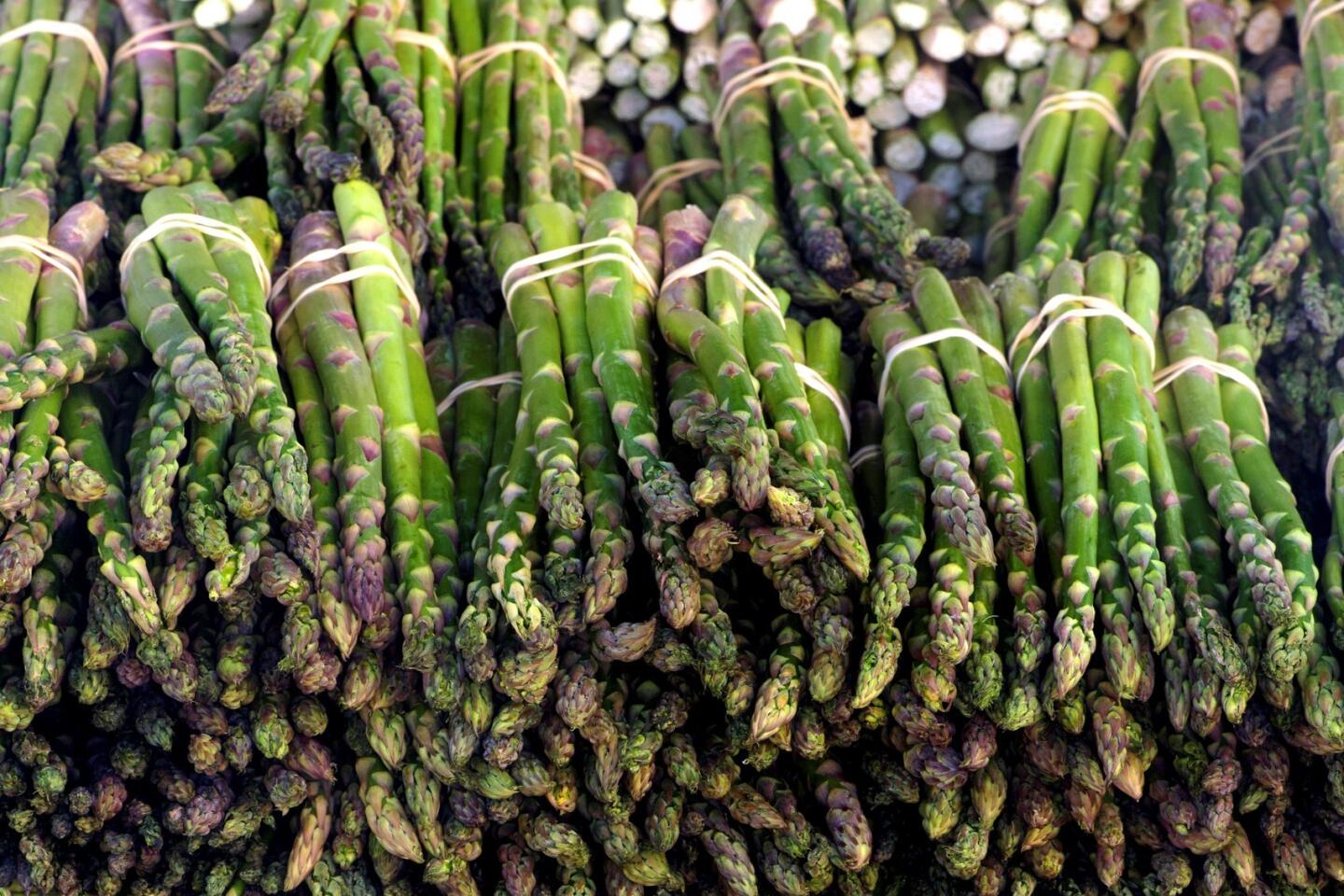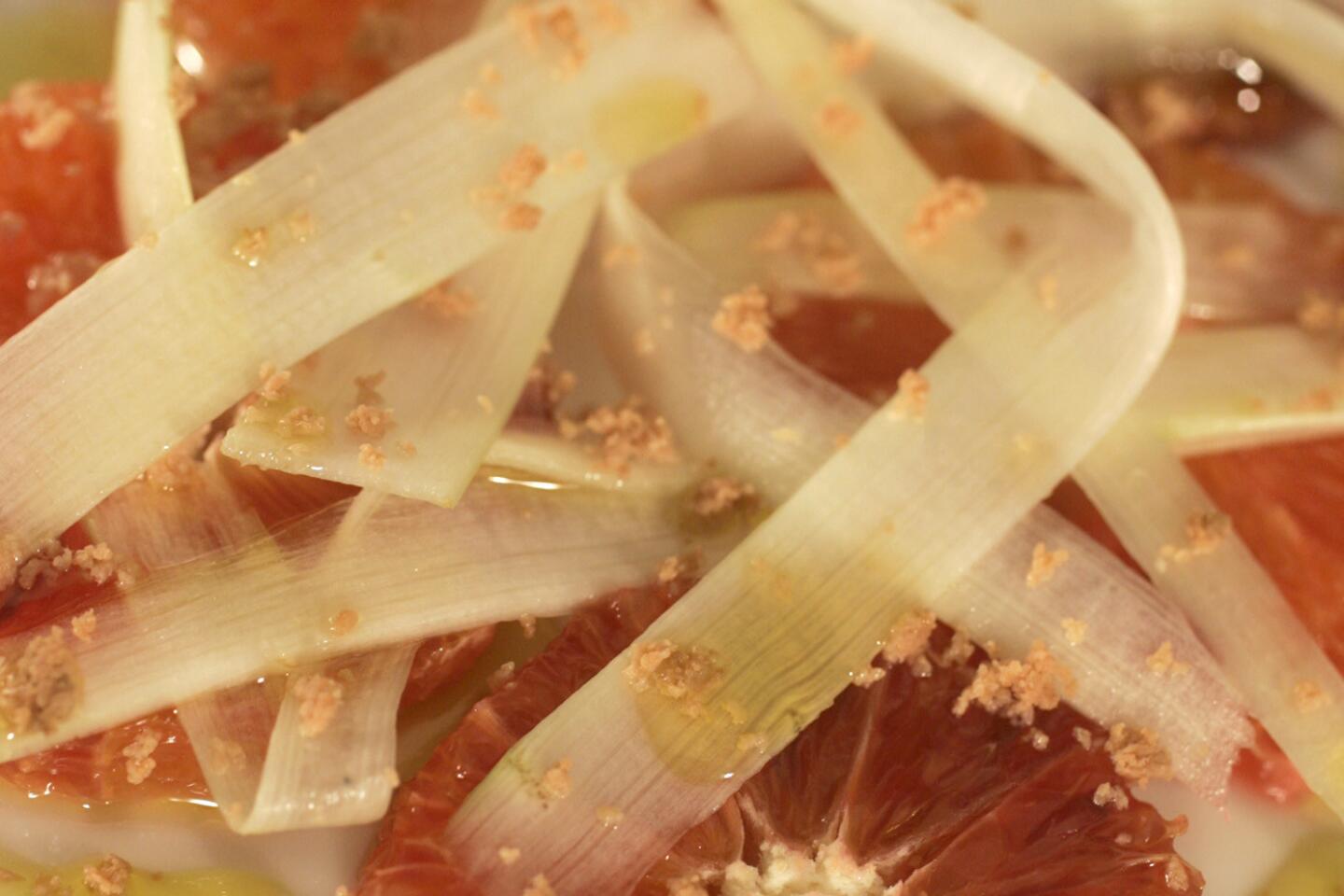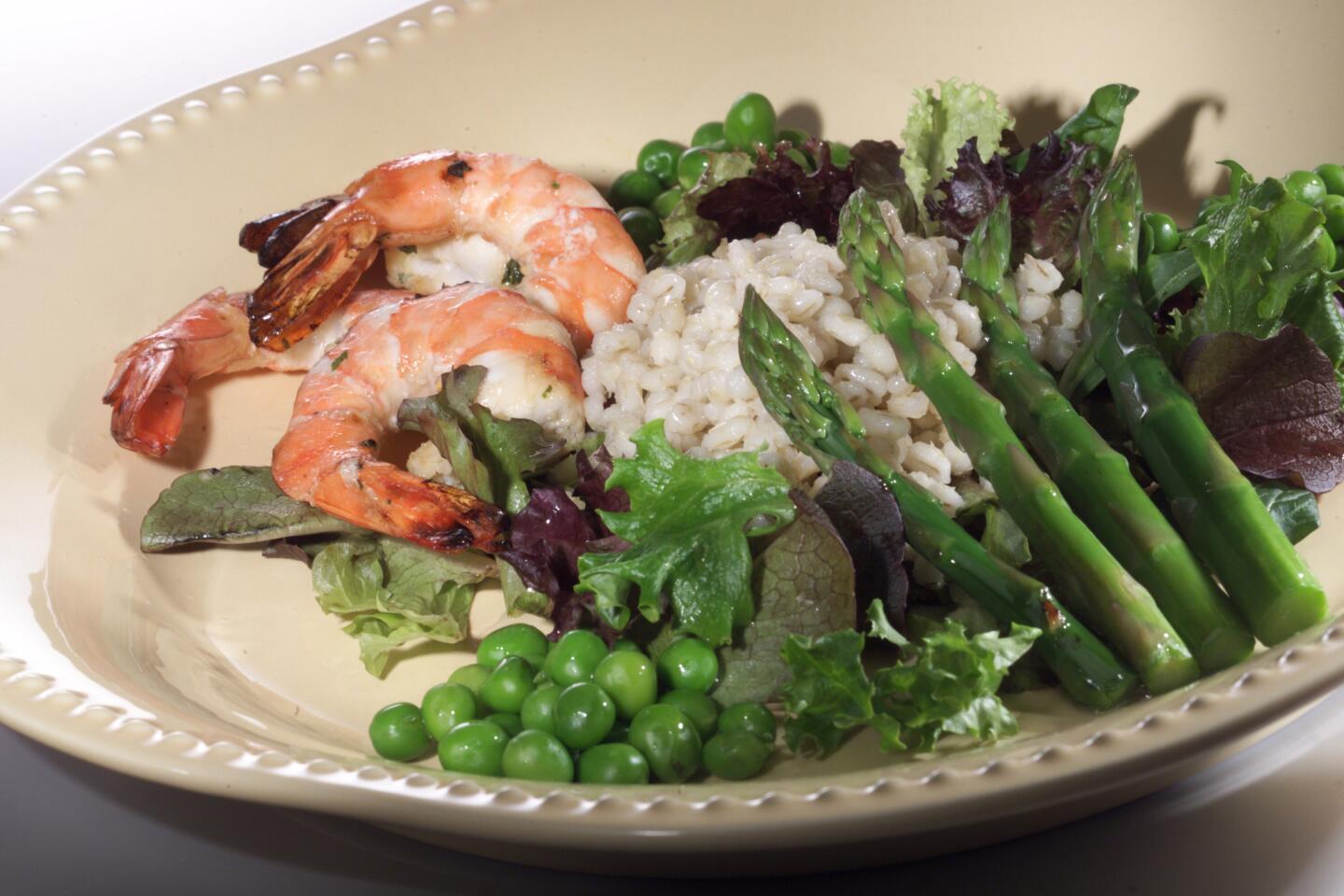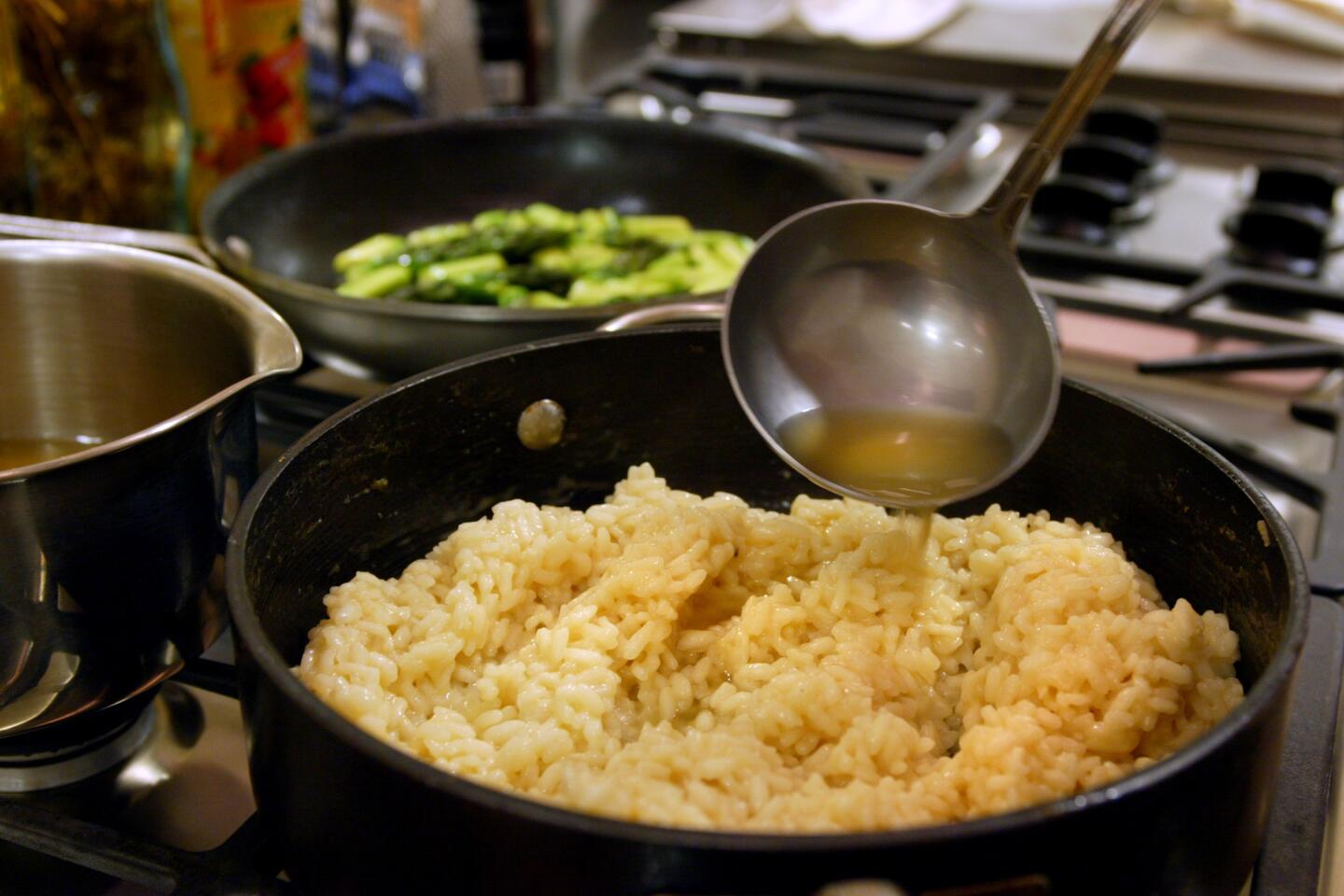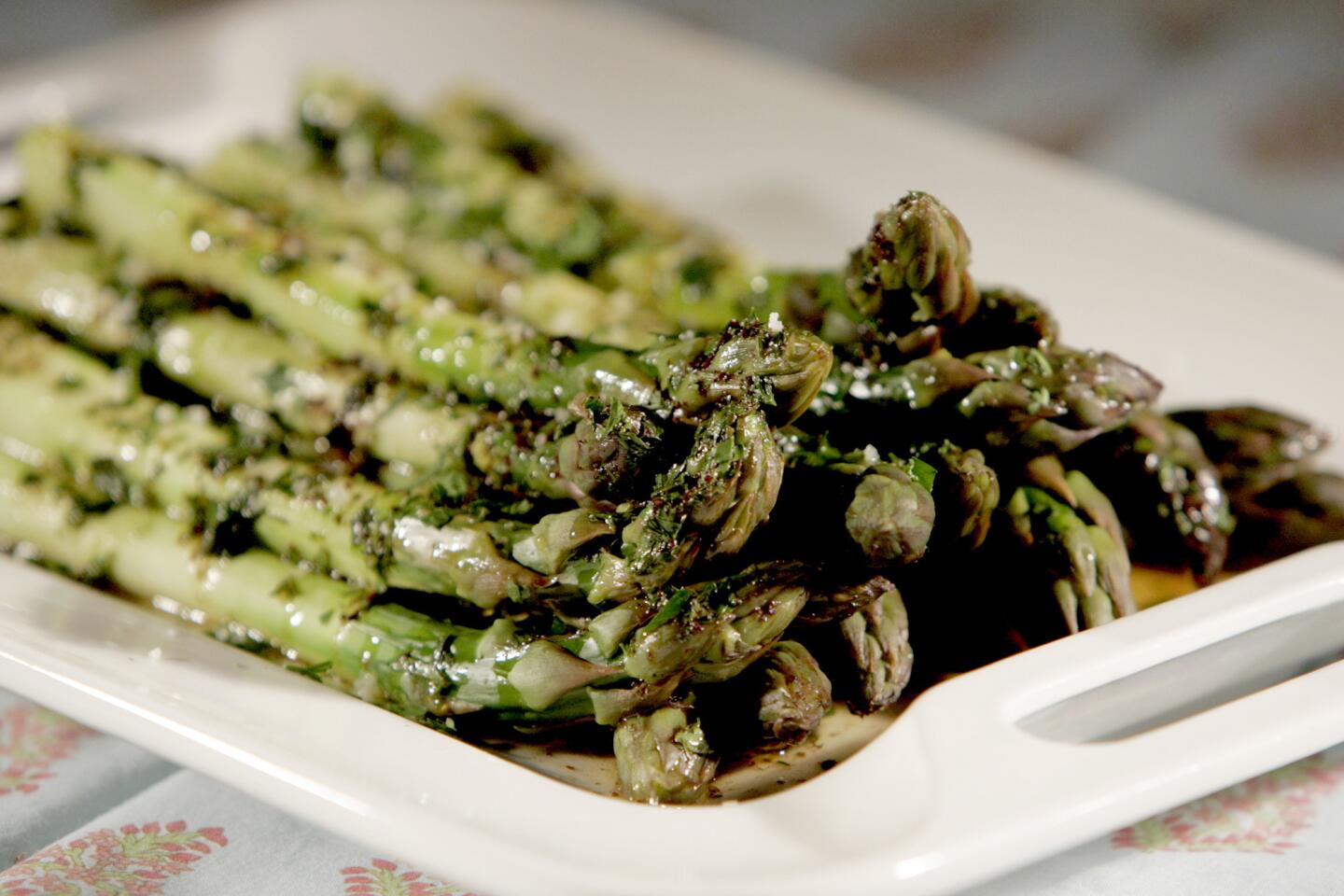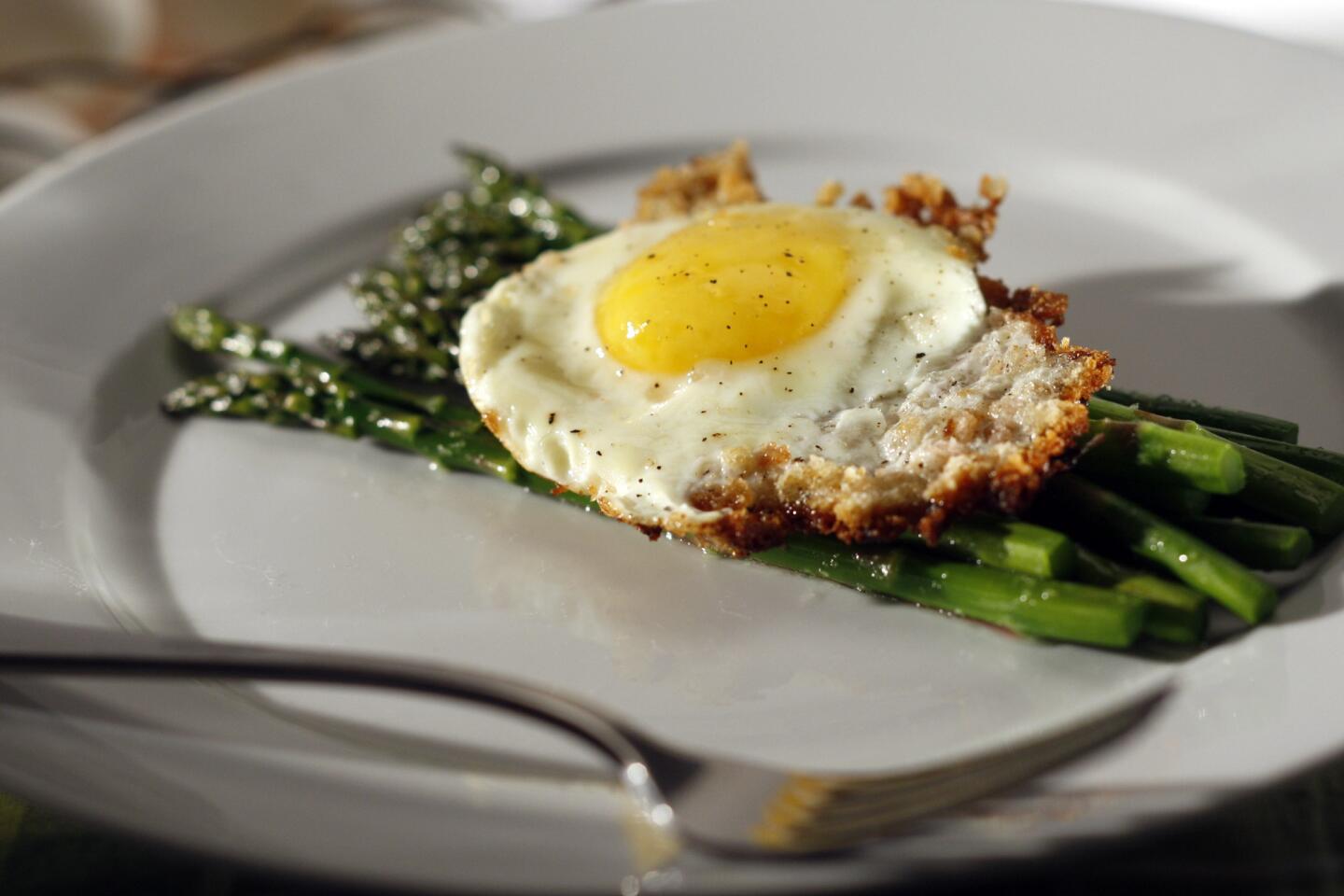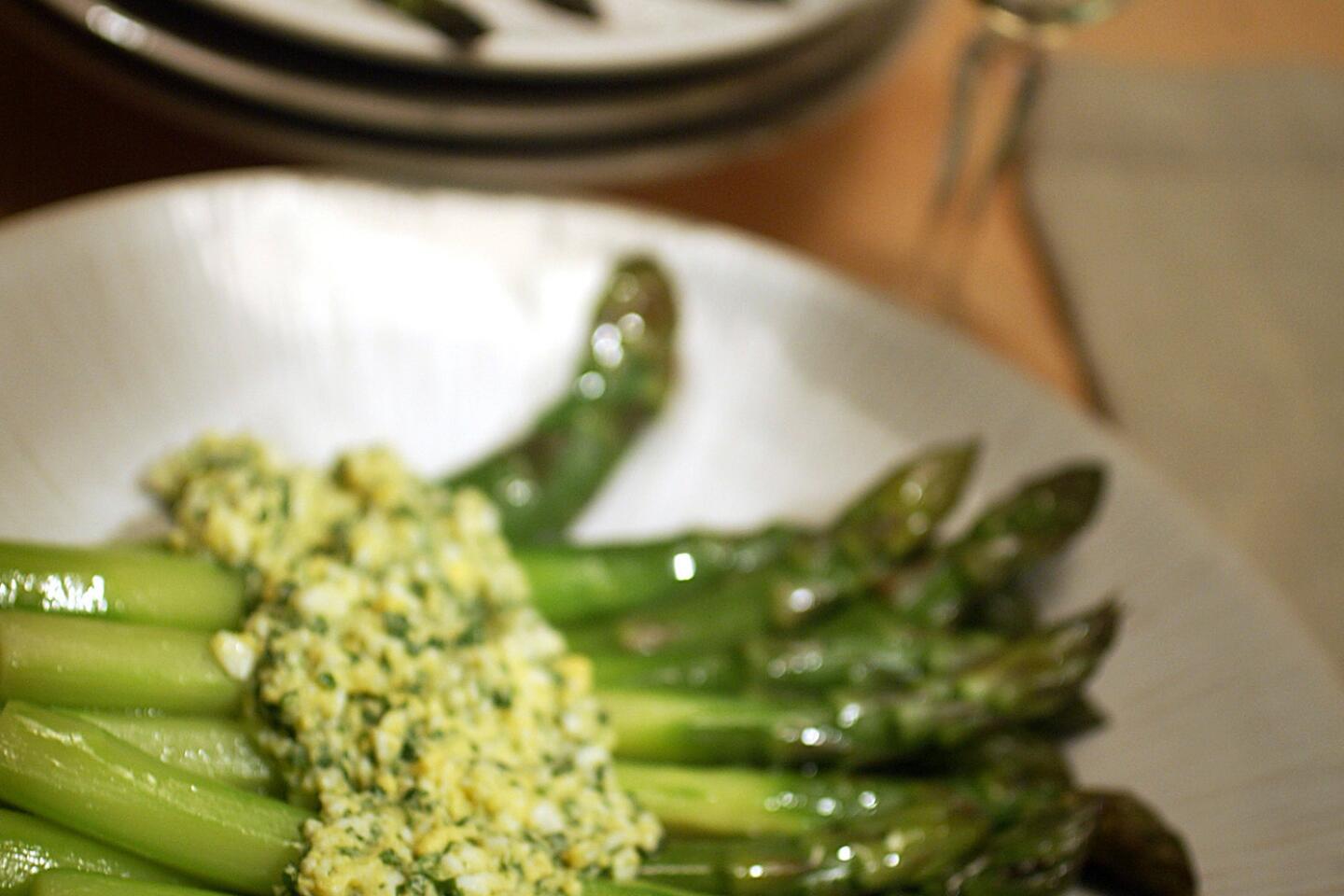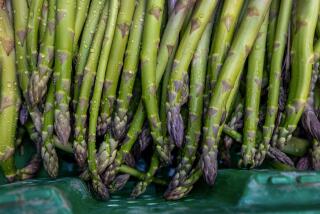Skinny or fat? Solving the great asparagus divide with seven recipes
- Share via
True lovers of asparagus are a devout bunch, united in their passion for spring’s first green spears and resolute in their refusal to be seduced by the siren song of out-of-season impostors. But within this flock lies a deep division. Meet another asparagus devotee and the first question they will usually ask is: “Thick or thin?”
Spear size, it seems, has become an ideological issue.
Believers in skinny spears claim that theirs is superior because it doesn’t need to be peeled. It is delicate and crisp. Its very slenderness is evidence that it truly is the first spear of spring.
PHOTOS: 7 delicious asparagus recipes
Followers of the fatties respond equally dogmatically. Their spears aren’t tough at all. Further, they are obviously the one true choice because what could better befit the promise of spring than a rich, juicy texture?
I refuse to be drawn into the debate. Preferring to spread olive oil on these troubled waters, I embrace both sides. Skinny and fat, all asparagus spears are good, in their own ways.
Let the healing begin. But before we can move forward, we must dispel some myths.
MORE: Behold the beet with 12 great recipes
First, a slender spear is not a sign of the first harvest. In fact, it must be said, the opposite is true. Whether asparagus is thick or thin depends on many things, but primary among them is what farmers call vigor -- how healthy the plant is. On this issue, the scientific evidence is clear: Plants just beginning to produce make fatter spears.
It’s not as cut and dried as that, though, because the same plant will produce a range of sizes. Asparagus grows from a mass of roots, and each mass sends up scores of spears. Those that come up closest to the center, where the plant stores its nutrients, are fatter. Those farther out on the fringe are thinner.
Furthermore, although fatter asparagus does have a thicker, more fibrous peel that does need to be removed before cooking, it also has much more tender inner flesh. The peel is thinner on slender asparagus, but so is the center.
MORE: Terrifically rich navel oranges
While we’re dispelling myths and cookbook cliches, let’s also get rid of the whole “snapping off the woody base” thing once and for all. It is true that the lower portion of asparagus is tougher and stringier and that some of it does need to be removed before the spears are cooked.
It is also true that if you follow the conventional wisdom on removing the tough part -- hold the tip of the asparagus in one hand and the base in the other and bend the spear until it snaps -- you will waste a lot of asparagus. Try it yourself: Snap some asparagus and then cook the supposedly woody end. You’ll find that much of what you would normally discard is edible -- even delicious -- down to the last inch and a half or so. You’re much better off simply removing that portion with a knife.
With fat asparagus, the peel is thicker and more fibrous toward the bottom. So start peeling from the tip, using gentle pressure, and then gradually increase the pressure toward the base. This will get rid of all the tough parts and leave only the juicy core. (White asparagus, in particular, tends toward the stringy; in Europe a special peeler is used with an adjustable blade that will trim more deeply than normal.)
CALIFORNIA COOKBOOK: Hundreds of Times test kitchen recipes
On a related plumbing issue: No matter how big a hurry you are in, do not put those asparagus peels down the drain. I don’t care if your garbage disposal will grind glass, it will not break up asparagus peels.
Just because all spears are equally good doesn’t mean they are equally good for all things. For me, the choice of skinny or fat comes down to whether I’m going to use the asparagus as a vegetable or as an ingredient.
When I’m thinking of a plain platter stacked high with asparagus that has been simply boiled or steamed and lightly dressed with, say, a brightly colored sauce mimosa, the only choice is thick spears. And if it’s the first asparagus of the season, there will probably be enough to make up the whole dinner.
Properly cooked, which is to say long enough that the asparagus is tender all the way through but quickly enough that the flavor and color haven’t begun to fade, fat spears are incomparably rich and juicy. The texture is almost like a vegetable mousse, with just a slight resistance to the tooth.
If I’m planning a dish that will include asparagus along with other ingredients -- a risotto or a frittata, for example -- I’ll pick the thinnest spears I can find. They’ll combine better with the other elements in the dish, where the thick ones might dominate.
Because it hasn’t been peeled, skinny asparagus also tends to be a little crisper and have a brighter color that stands out better in a mix of ingredients.
Spears that are of average size can be used either way, but I think they’re especially good for roasting. They’re not so thin that they cook through before they brown nor so fat that they never get tender. Wrapping them in prosciutto beforehand lends new meaning to gilding the lily.
PHOTOS: 7 delicious asparagus recipes
No single size has a lock on goodness. To each spear its own preparation. We true believers shouldn’t be wasting our energies on silly internal squabbles. We should save our strength for fighting the out-of-seasoners.
How to choose: The first thing to look at is the tips – remember that asparagus is a fern that will unfurl if left too long, so you want those tips to be as tightly closed as possible. This is also the first place that asparagus will start to show signs of spoilage; there should be no soft spots. Next check the length of the spear; asparagus will start to wrinkle along the sides if its been too long out of water. Finally, check the base to make sure it is still moist. Good vendors will usually store asparagus standing upright in a tray of water or on top of a moist towel to preserve them better.
How to store: Take a tip from the stores: Stand the asparagus upright in a large glass or tray with water in it and then place a plastic bag over the tips. Asparagus will last several days in the refrigerator this way.
ALSO:
RECIPES: Navel (orange) gazing
RECIPES: Chard was cool before kale
More to Read
Eat your way across L.A.
Get our weekly Tasting Notes newsletter for reviews, news and more.
You may occasionally receive promotional content from the Los Angeles Times.
